Cockroaches are hardy insects found worldwide. They have flat, oval-shaped bodies and long antennas. These pests are known for their adaptability and can survive in various environments. Cockroaches are mostly nocturnal, meaning they are active at night. They feed on a wide range of things, from food crumbs to organic matter. Unfortunately, they can also spread diseases by contaminating food and surfaces.
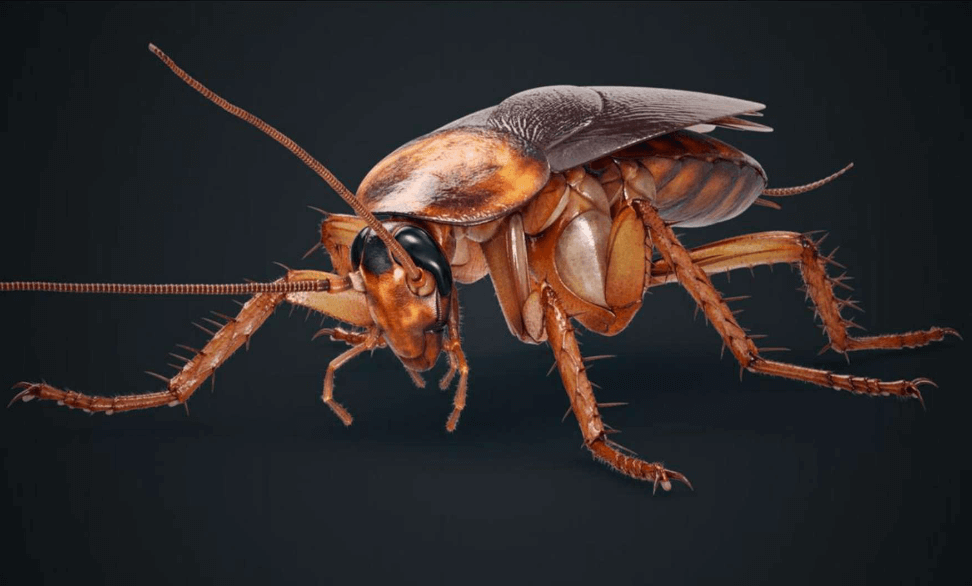
Cockroaches reproduce quickly, making them challenging to control once an infestation occurs. To prevent their presence, maintaining cleanliness is crucial. Sealing food properly, fixing leaks, and eliminating hiding spots can help keep these resilient insects at bay. While they might be a common household nuisance, understanding their habits and taking preventive measures can help minimize their impact.
Anatomy of Cockroach
The anatomy of a cockroach is fascinating and well-adapted for its survival. These insects have a hard exoskeleton, providing protection and support. Their body is divided into three main parts: Head, Thorax, and Abdomen. The head houses sensory organs, including antennae and compound eyes, enabling them to navigate their surroundings. Cockroaches possess powerful jaws for feeding on a variety of organic matter. Moving to the Thorax, it’s the middle section where six legs are attached, allowing for rapid and agile movement. Wings, if present, are also connected to the thorax. The Abdomen is the last part which contains vital organs such as the digestive and reproductive systems. Cockroaches are known for their incredible resilience and adaptability, traits reflected in their well-organized and efficient anatomy.
Alimentary Canal
The alimentary canal of a cockroach is a specialized digestive system adapted to its insect lifestyle. It consists of several distinct parts, including the foregut, midgut, and hindgut. The process starts as the cockroach consumes food through its mouthparts, engaging in mechanical breakdown by chewing. Saliva mixes with the food in the mouth, aiding in the initial digestion. The foregut leads to the crop, a storage organ where food is temporarily held.
From there, it passes into the midgut, where digestive enzymes and juices break down the food further, extracting nutrients. The hindgut absorbs water and minerals, and the remaining undigested material is compacted into feces. Unlike mammals, cockroaches lack a distinct stomach but have a unique arrangement to efficiently process their diet, which mainly consists of plant matter, decaying organic material, and sometimes small insects. This streamlined digestive system plays a role in sustaining the cockroach’s energy and survival.
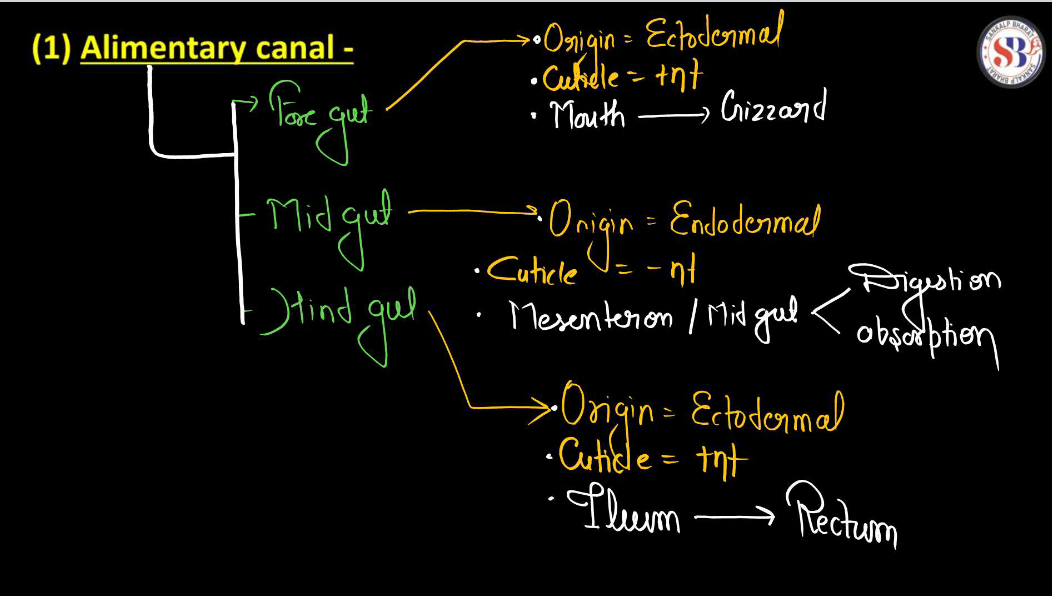
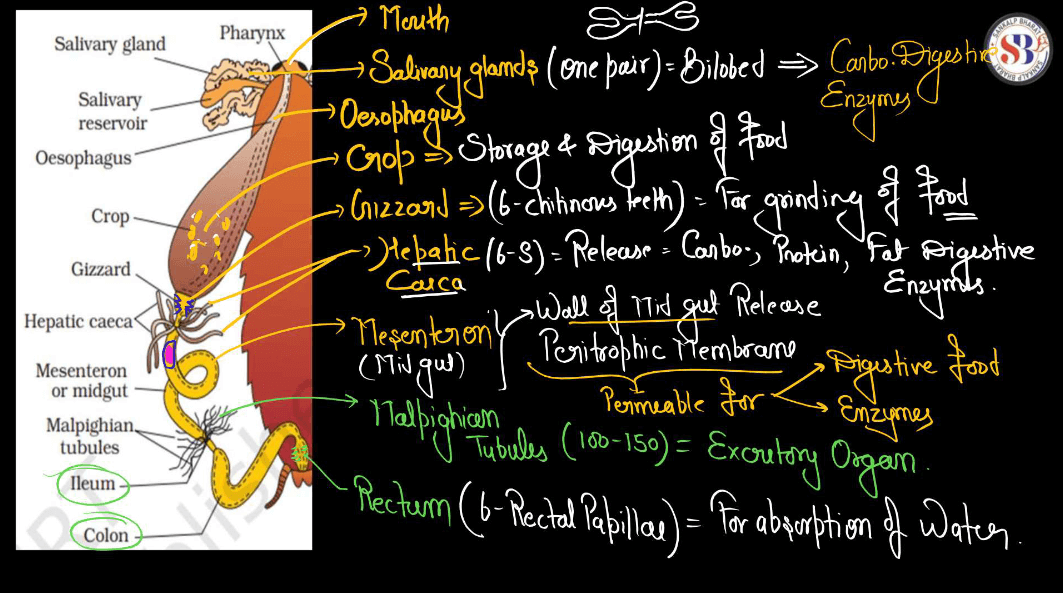
Circulatory System
The circulatory system of a cockroach is a simple yet efficient network responsible for transporting nutrients and oxygen throughout its body. Unlike mammals with closed circulatory systems, cockroaches have an open circulatory system. In this system, hemolymph, a fluid similar to our blood, bathes the organs directly. The heart, located in the abdomen, pumps hemolymph into the body cavity, allowing it to flow freely and reach the organs. Nutrients and oxygen are exchanged directly between hemolymph and tissues. While this system may seem less complex than humans, it effectively meets the cockroach’s needs, enabling it to survive and thrive. The open circulatory system in cockroaches plays a crucial role in sustaining their basic physiological and overall well-being.
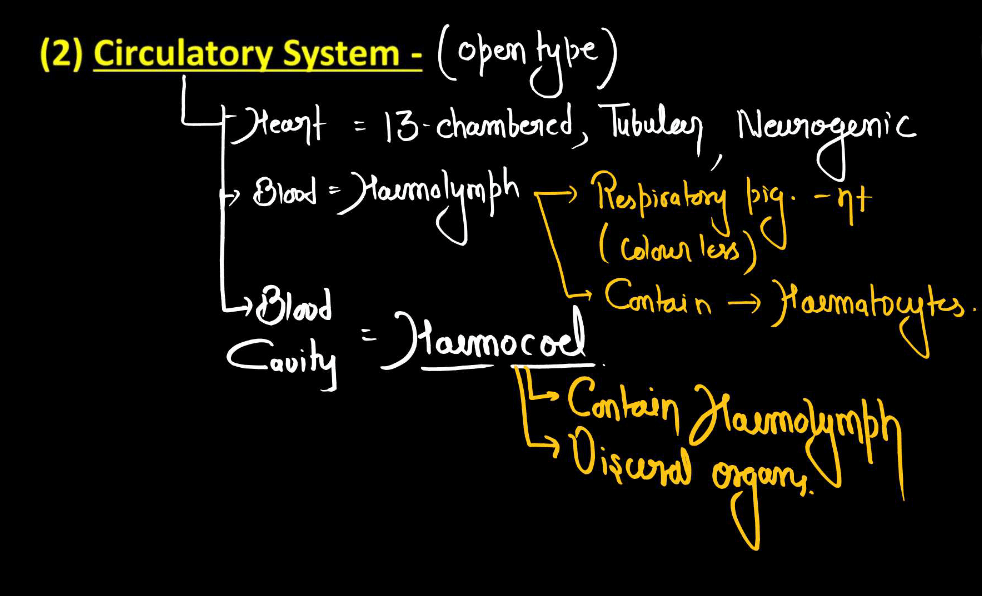
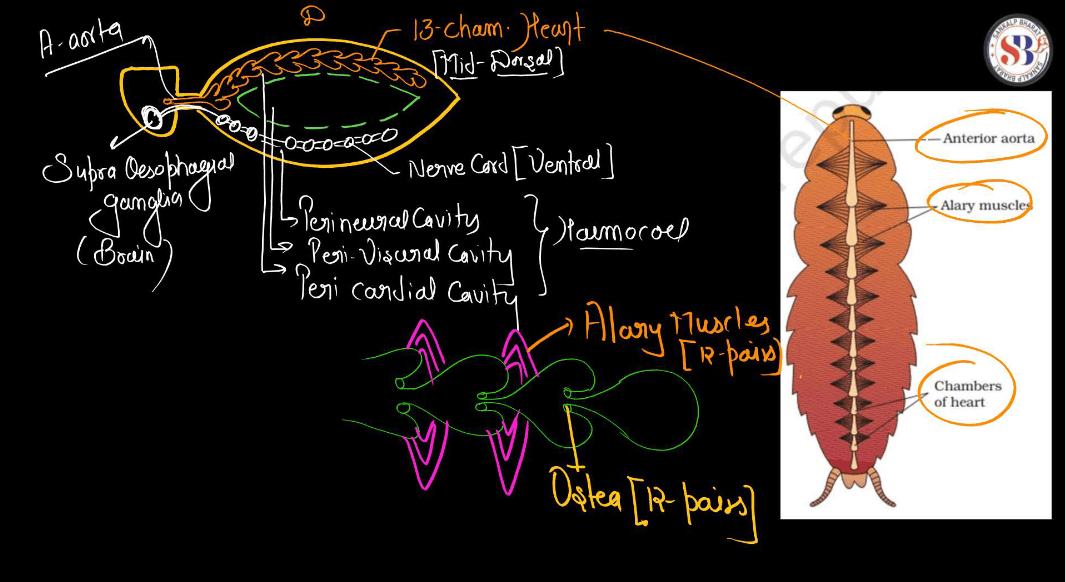
Sensory Organs
The body of the Cockroaches has many different Sensory Receptors namely: Chemosensors, Photoreceptors, Mechanoreceptors, Thermoreceptors, and Hydroreceptors. Some of them are discussed below:
- Chemosensors: These receptors, located in the antennae and mouthparts, enable cockroaches to detect and respond to chemical stimuli, including pheromones and food odors.
- Photoreceptors: Found in the compound eyes, these receptors allow cockroaches to perceive light and distinguish shapes and movements.
- Mechanoreceptors: Located on sensory hairs (setae) across the body, legs, and antennae, these receptors respond to mechanical stimuli, providing information about touch, air currents, and vibrations.
- Thermoreceptors: Distributed on the body, these receptors help cockroaches sense temperature changes in their environment.
- Hygroreceptors: These receptors, mainly on the antennae, assist in detecting humidity levels, aiding cockroaches in navigating their surroundings.
Respiratory System
The respiratory system of a cockroach is quite different from humans. Instead of lungs, cockroaches use tiny tubes called trachea to breathe. These trachea are like a network of pipes that carry air directly to cells throughout the body. Oxygen enters the body through small openings called spiracles, located on the sides of the cockroach’s body. The spiracles open and close to control the flow of air. Once inside, the air travels through the tracheal tubes, delivering oxygen to cells and removing carbon dioxide. This process is efficient for the cockroach’s small size, helping it breathe without the need for complex respiratory organs.
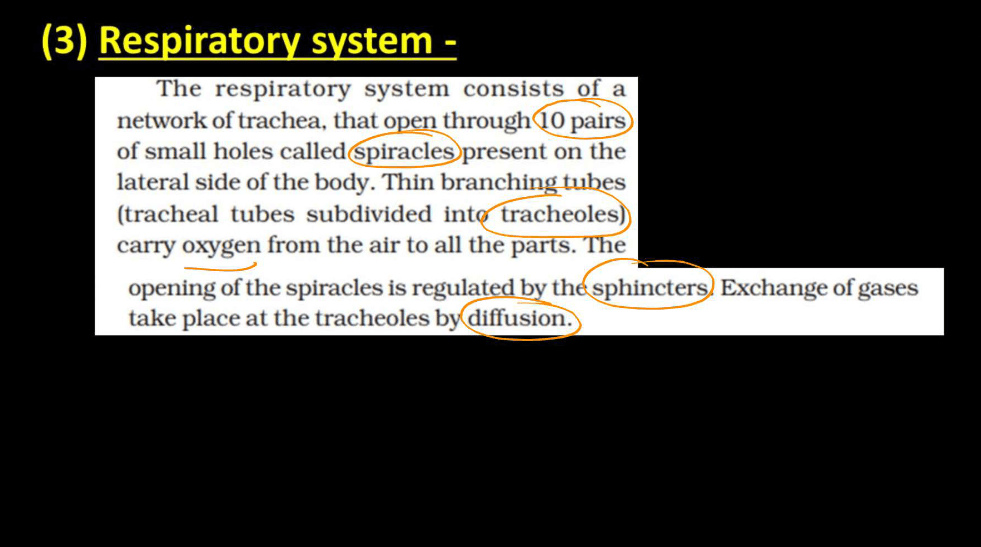
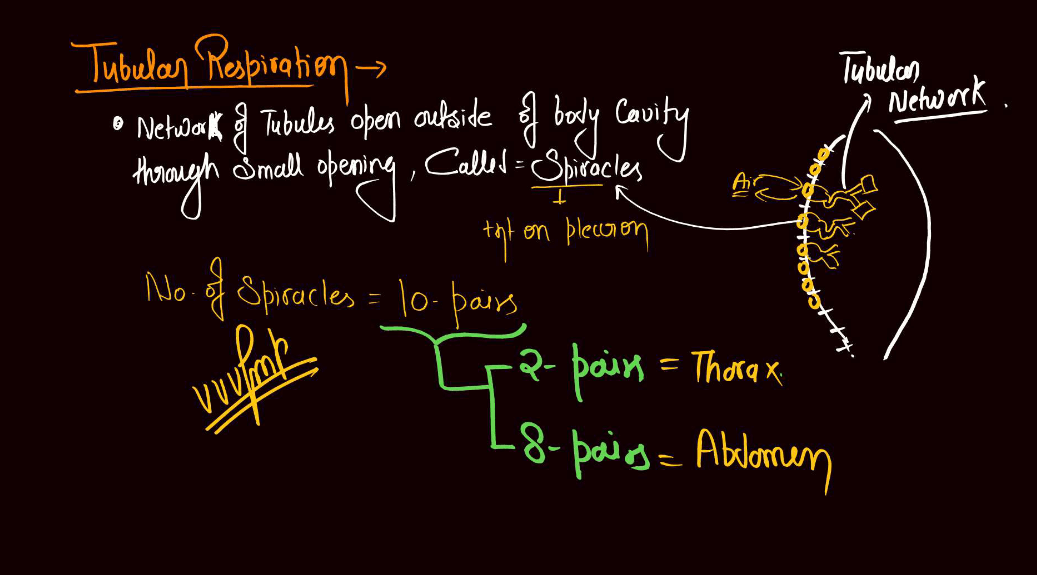
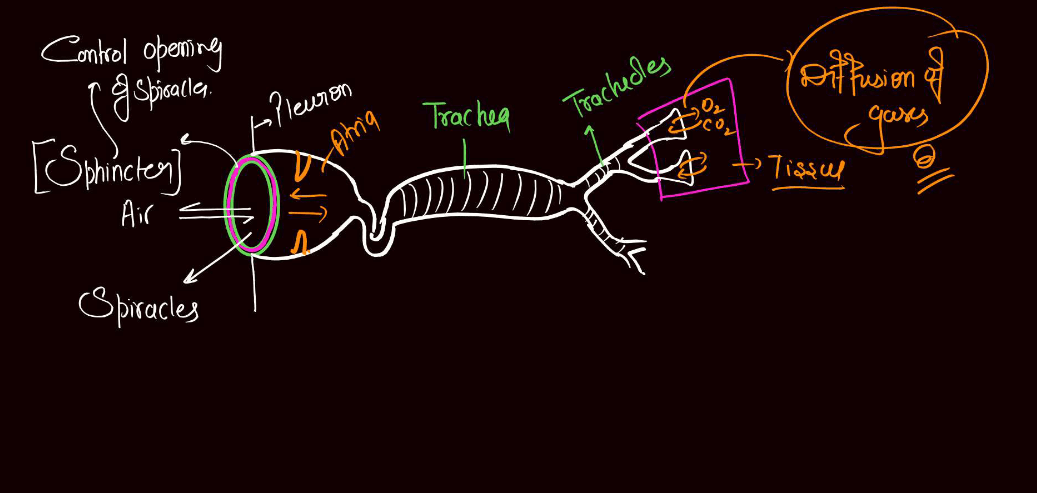
Excretory System
The excretory system of a cockroach is a vital mechanism for waste elimination. It primarily involves Malpighian tubules, which are thin, thread-like structures connected to the insect’s digestive system. These tubules filter waste materials from the insect’s blood, absorbing them into their tubular structures. The absorbed waste then combines with substances from the insect’s digestive system, forming uric acid crystals. These crystals move into the hindgut, where water and additional ions are reabsorbed. Finally, the concentrated uric acid is excreted as solid waste, eliminating excess nitrogenous compounds without significant water loss. This unique adaptation allows cockroaches to thrive in diverse environments, conserving water efficiently and contributing to their remarkable resilience.
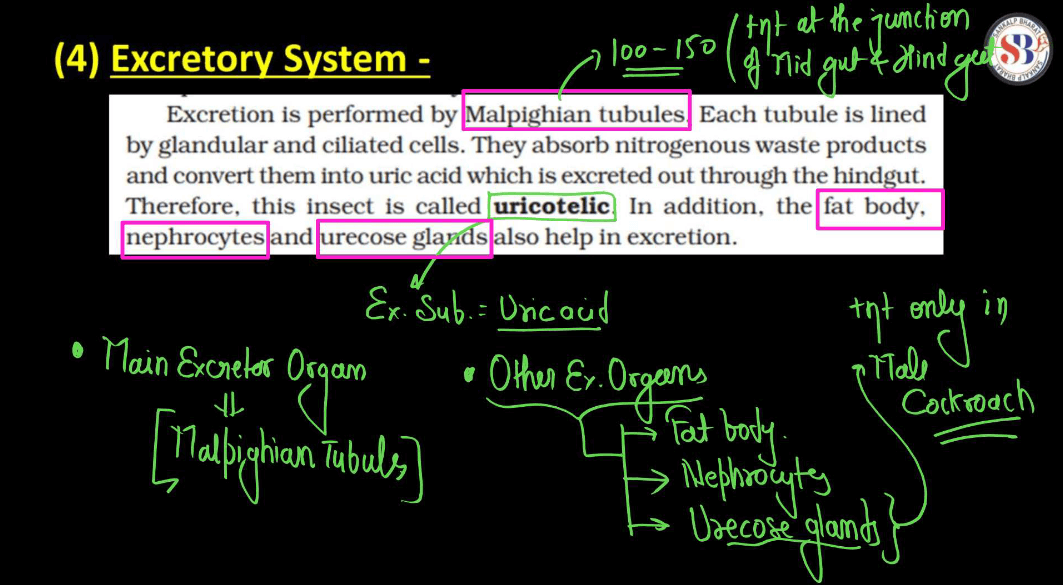
Nervous System
The nervous system of a cockroach is like its tiny command center, controlling its actions. It consists of a Brain, which is a cluster of nerve cells in its head, and a ventral nerve cord running along its belly. The brain receives information from the cockroach’s surroundings through its sensory organs, such as antennae and eyes. The nerve cord acts as a pathway, relying on signals from the brain to the rest of the body. When the cockroach senses something, like danger or food, the brain sends signals through the nerve cord, instructing the insect to react.
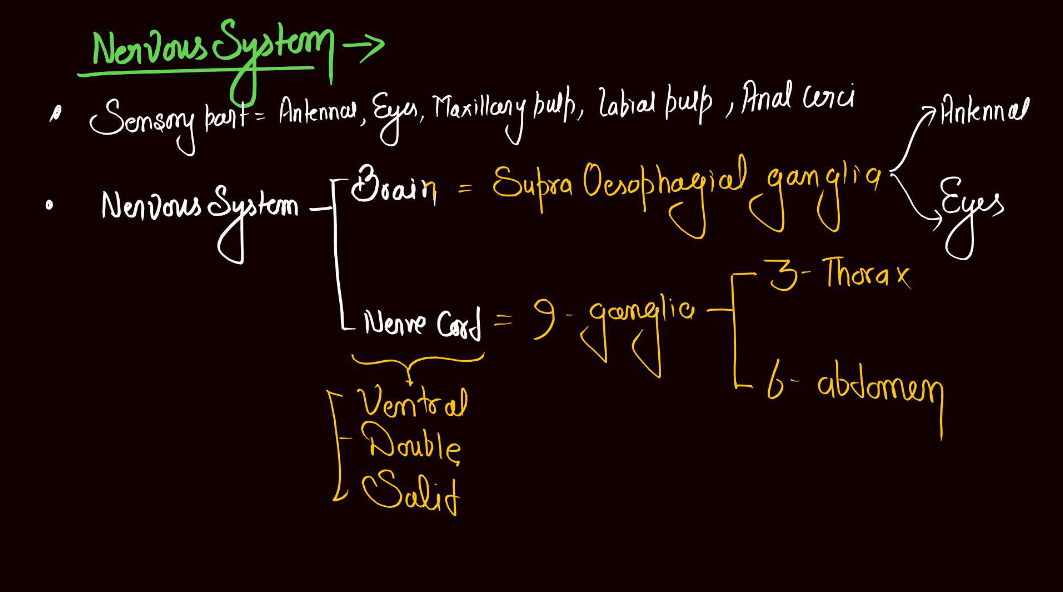
Reproductive System
The reproductive system of a cockroach is relatively simple. Cockroaches exhibit Sexual Reproduction and their reproductive organs are located at the rear end of their abdomen. Male cockroaches have testes, where sperm is produced, and they transfer sperm to the female during mating. Female cockroaches have ovaries, where eggs develop. The female’s reproductive system includes paired structures called oviducts, which receive sperm during copulation and guide the eggs toward the genital chamber. The eggs are then encased in a protective capsule, forming the ootheca. The ootheca is usually deposited in a safe location, ensuring the survival of the eggs. After a gestation period, nymphs hatch from the eggs, marking the continuation of the cockroach life cycle.
Male Reproductive System
The male reproductive system of a cockroach consists of testes, which produce sperm, and vas deferens, tubes that carry sperm to the external genitalia. During mating, the male transfers sperm to the female through a specialized structure called the aedeagus. Unlike mammals, cockroaches lack a penis, so the transfer occurs indirectly. The sperm then travels to the female’s spermatheca, where it is stored until she needs it to fertilize her eggs.
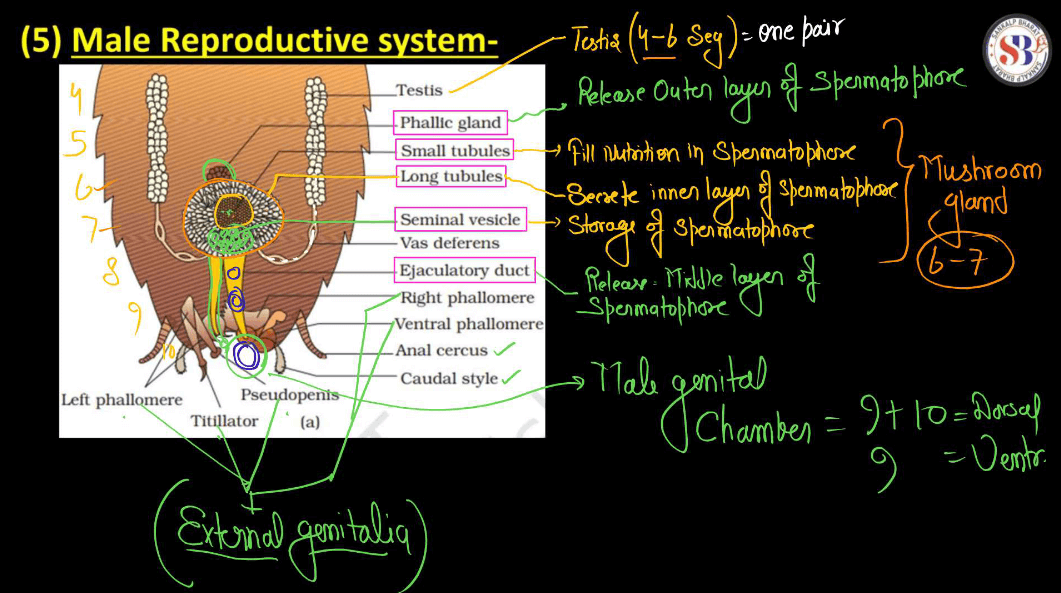
Female Reproductive System
The female reproductive system of a cockroach comprises ovaries that produce eggs and an oviduct through which the eggs pass. During mating, the female receives sperm from the male through the aedeagus, and it travels to her spermatheca for storage. When the female is ready to lay eggs, she releases them from her ovaries and deposits them in an egg case called ootheca. The ootheca protects the eggs until they hatch into nymphs. This reproductive process enables cockroach females to ensure the survival of their offspring in diverse environments.
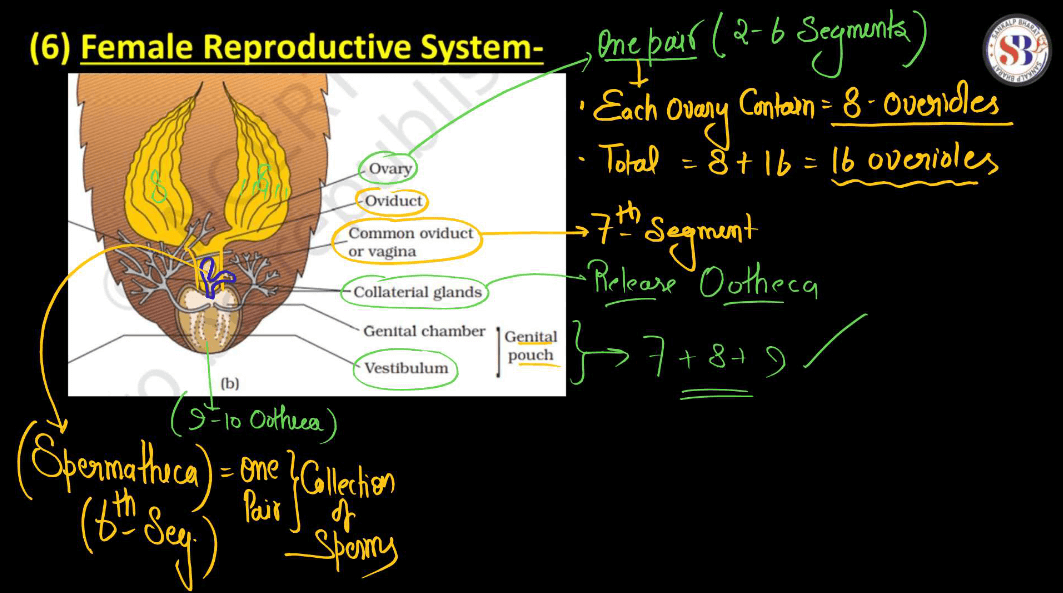
Watch the below video on Anatomy of Cockroach Class 11 Biology:

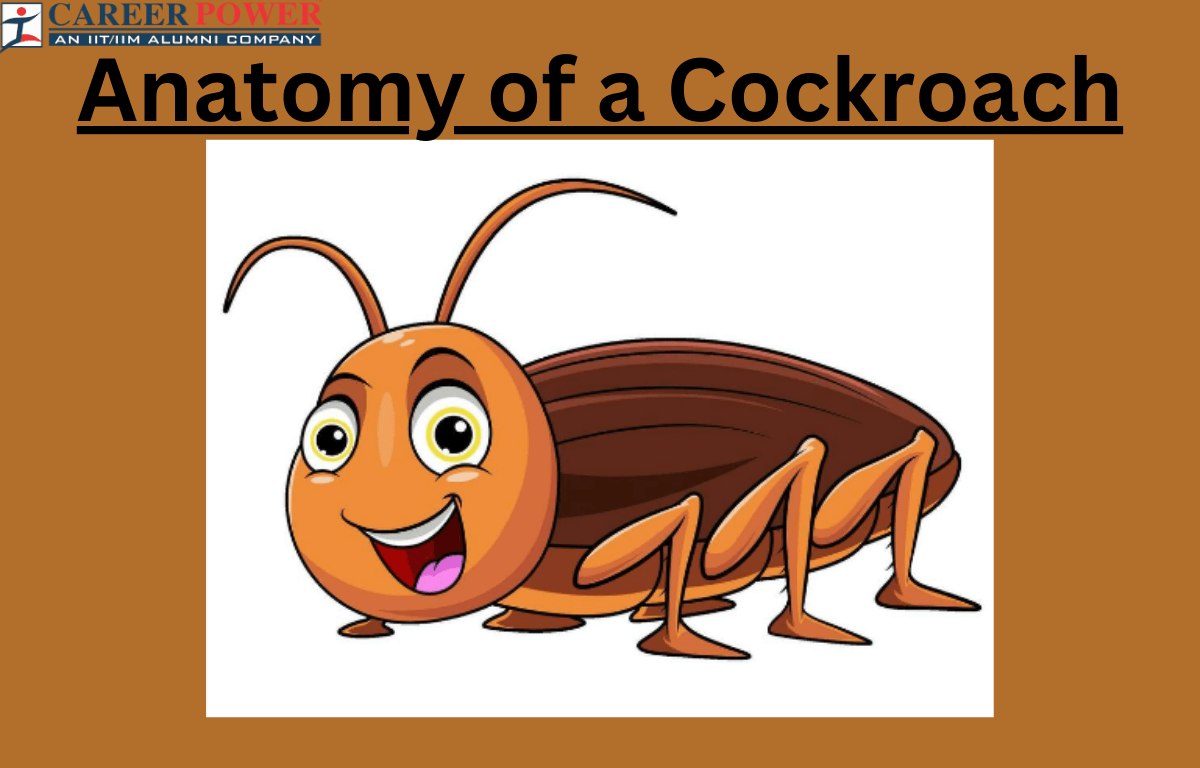

 50 Vegetables Name for Kids in English a...
50 Vegetables Name for Kids in English a...
 Food Chain: Definition, Types, Examples,...
Food Chain: Definition, Types, Examples,...
 Human Respiratory System: Definition, Di...
Human Respiratory System: Definition, Di...













